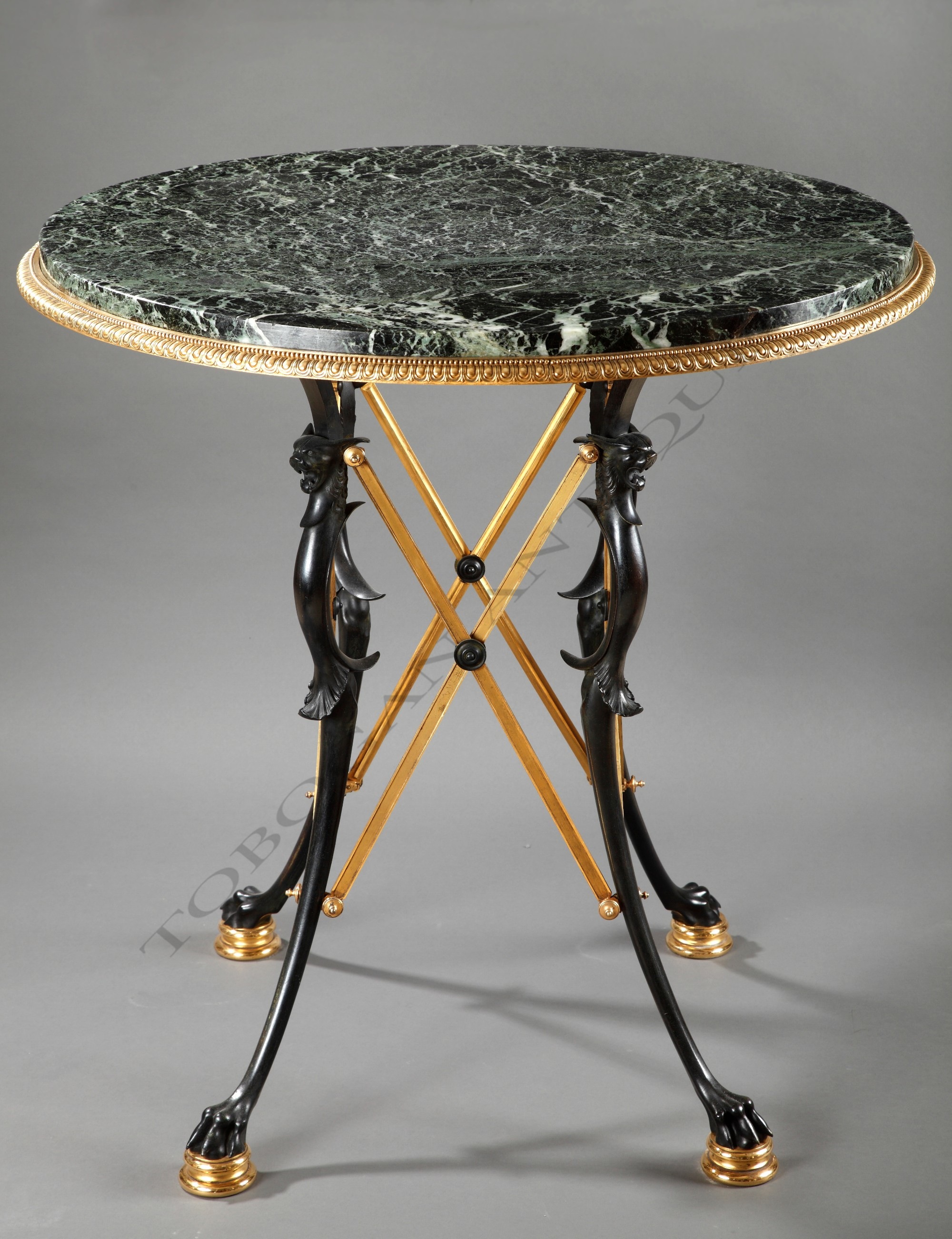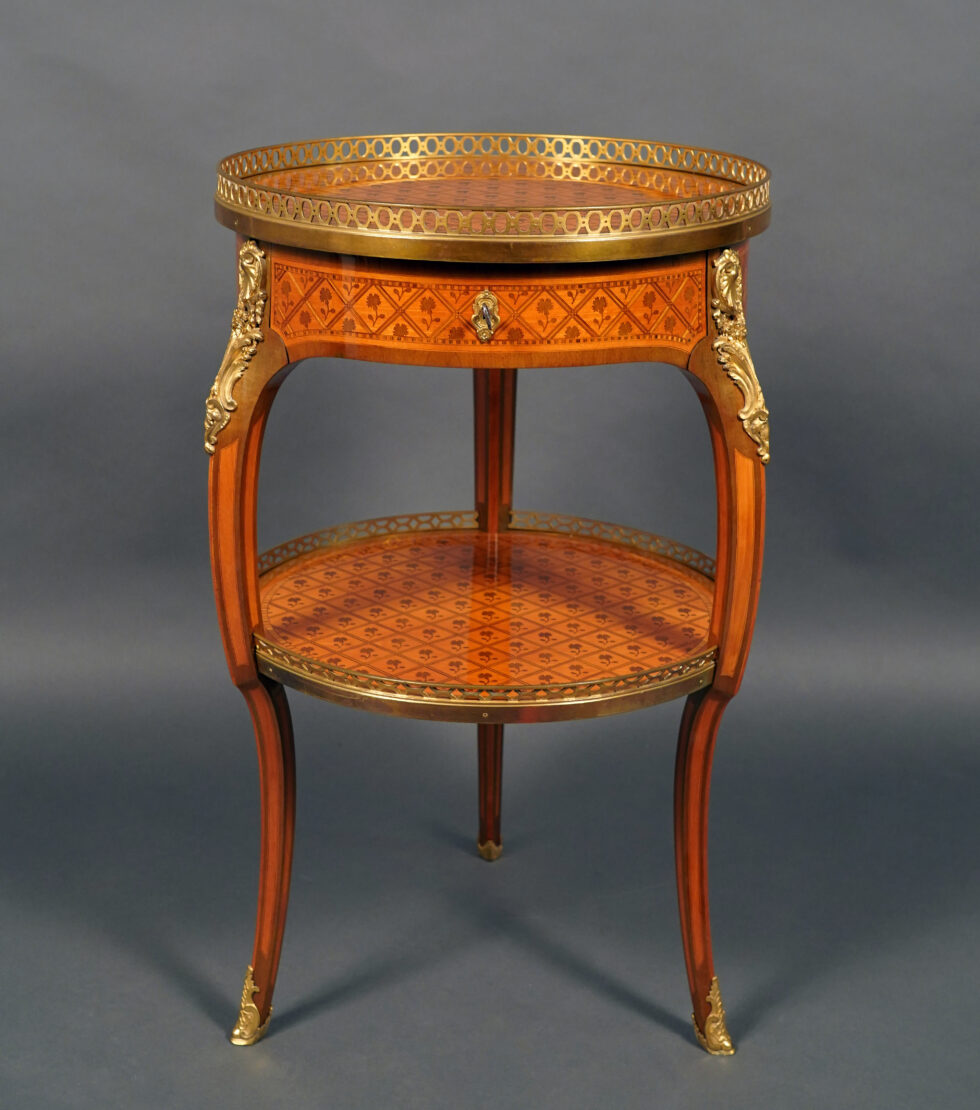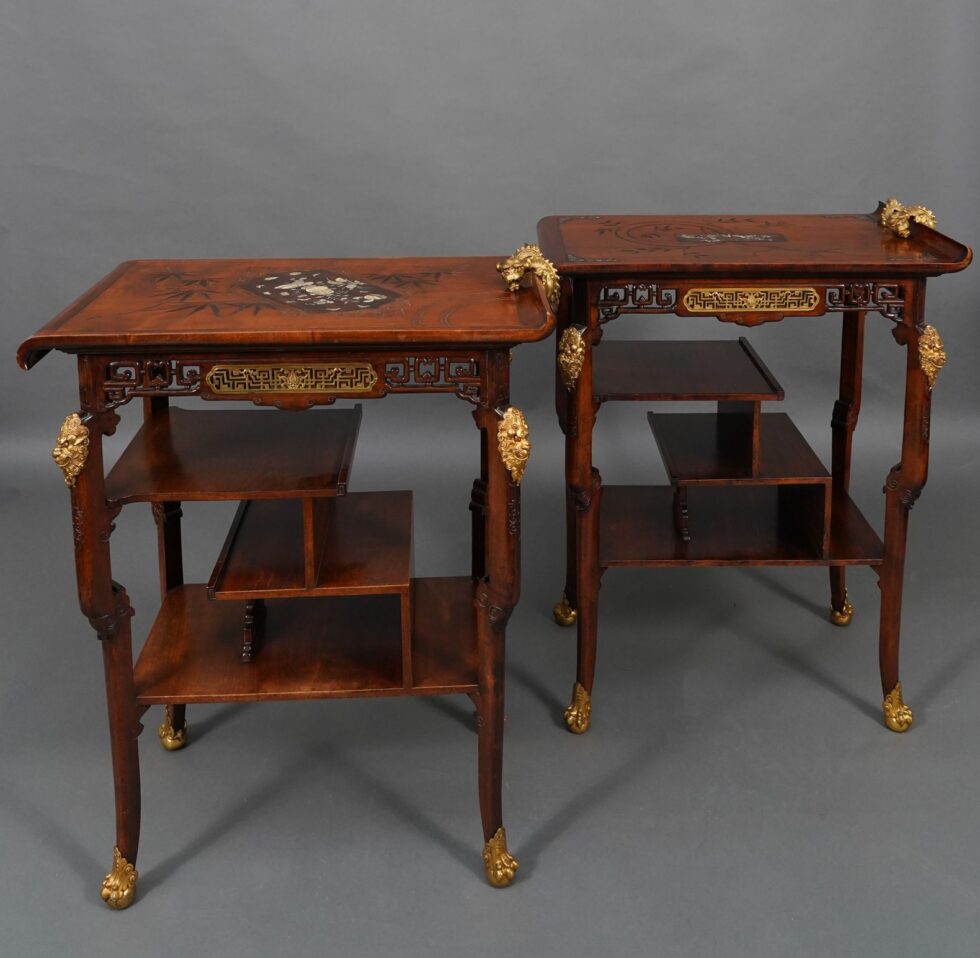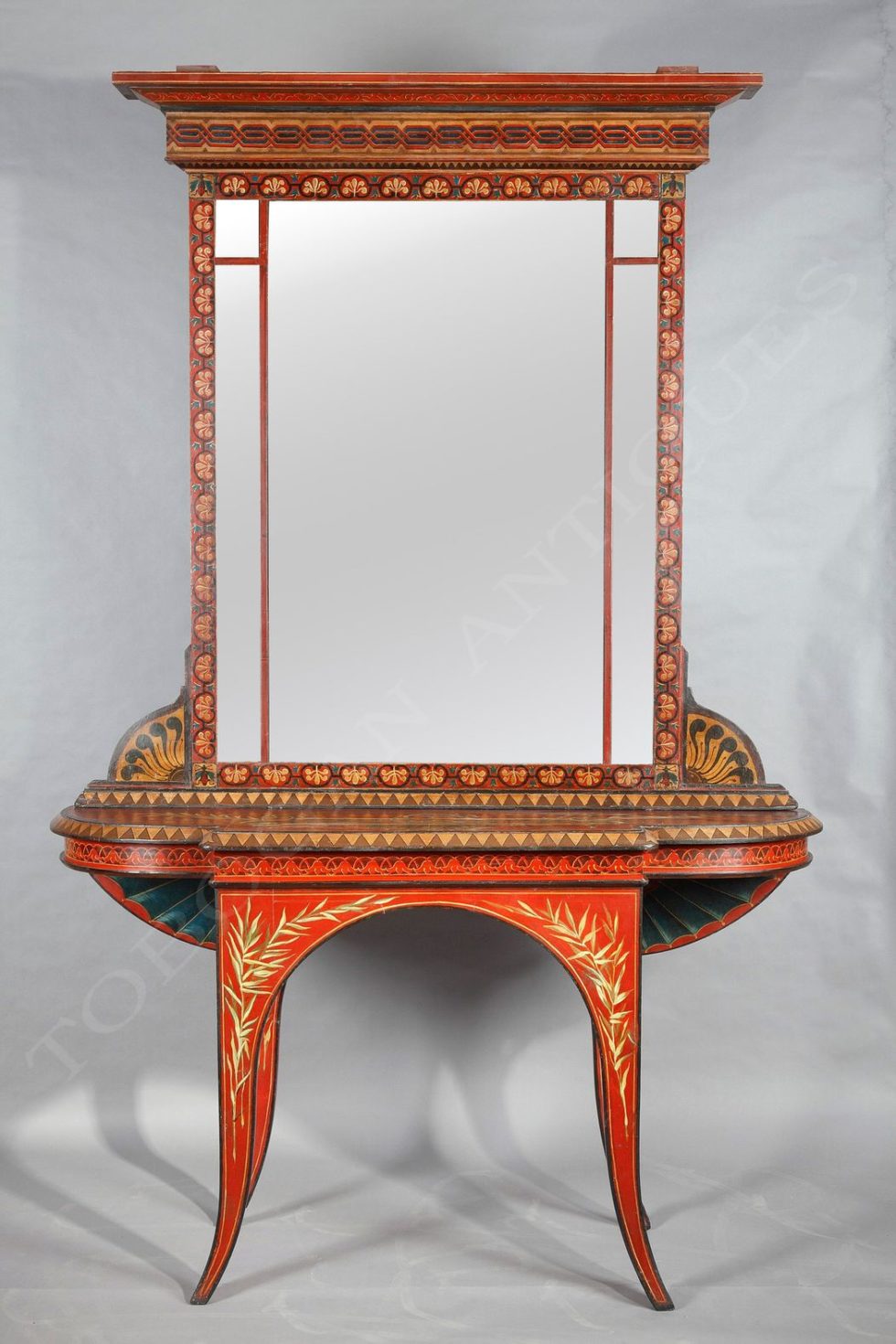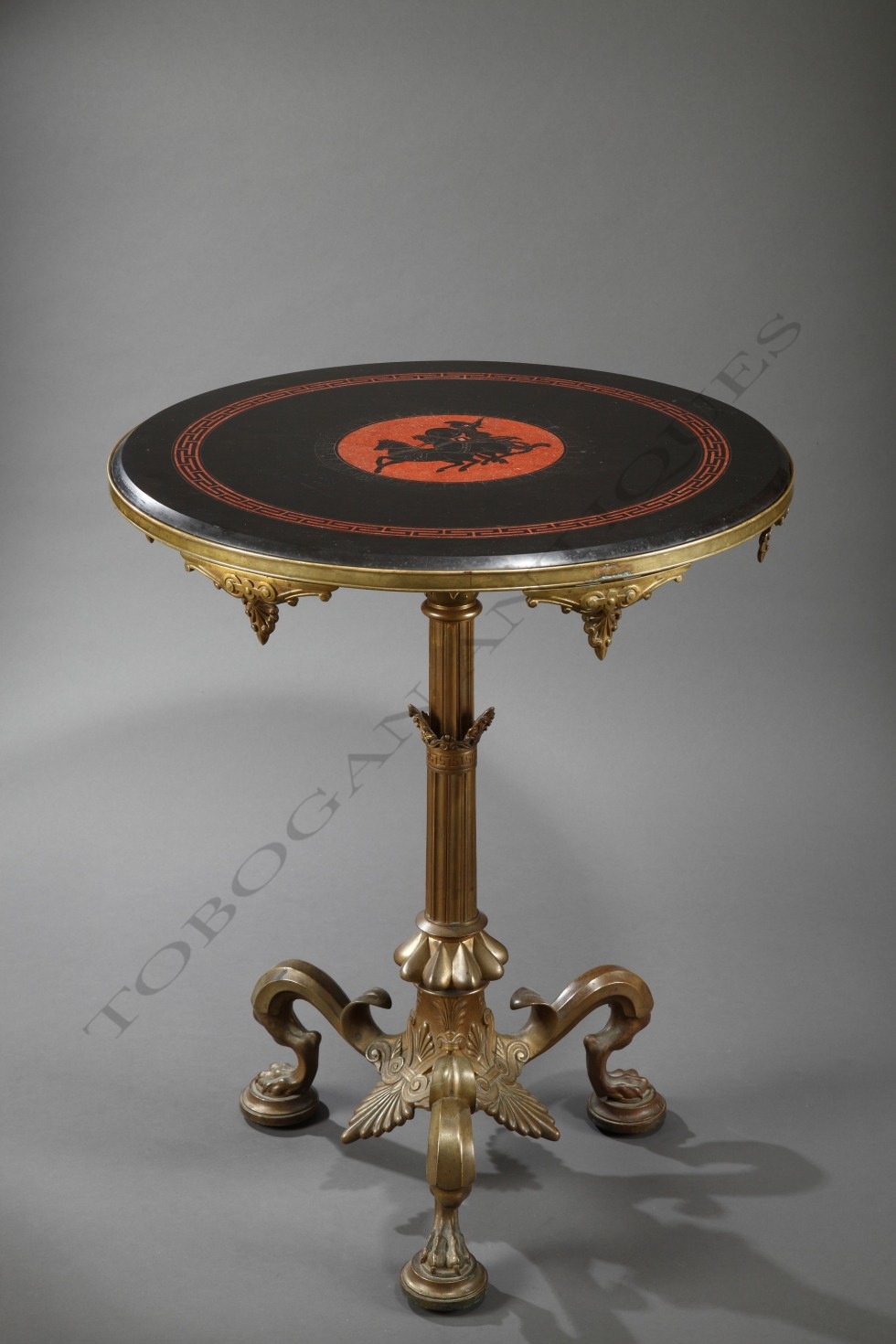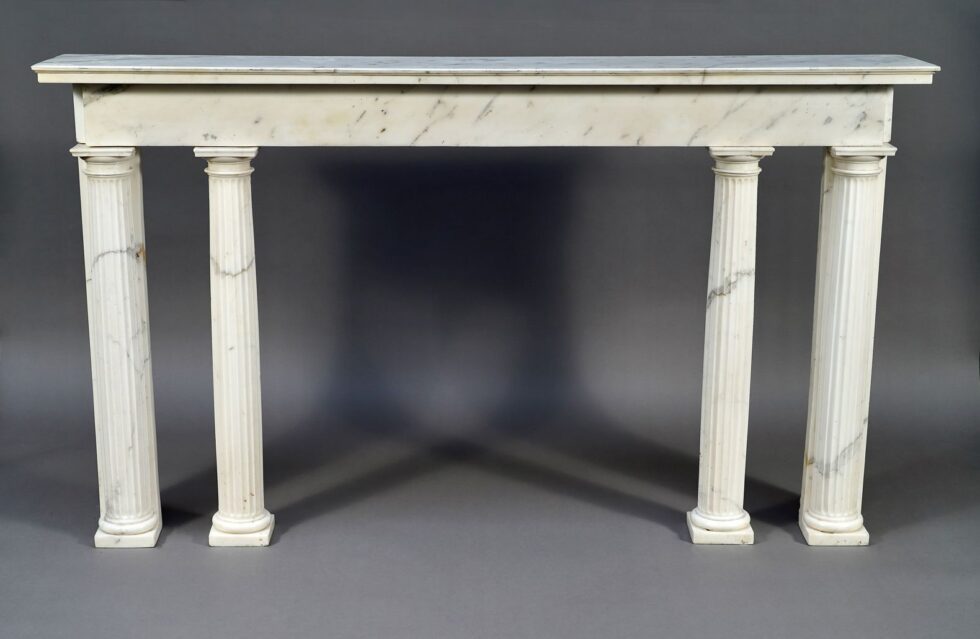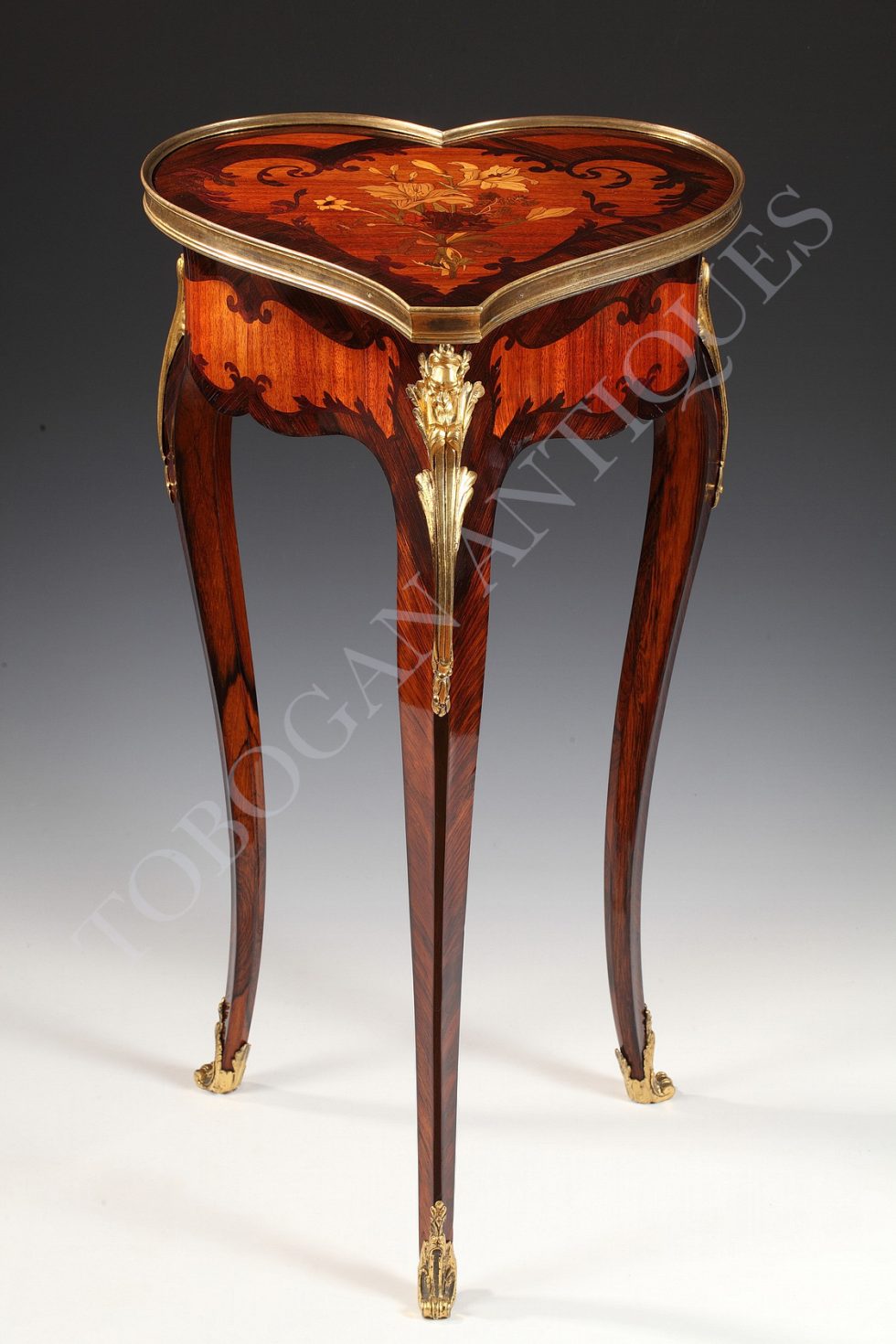ref. 700
L.-C. Sévin
Sculptor-ornemanist
(1821-1888)
F. Barbedienne
Bronze-caster
(1810-1892)
(attributed to)
Neo-Greek center table
France
Circa 1880
Height : 91 cm (35,8 in.) ; Diameter : 90 cm (35,5 in.)
A similar model exposed at the 1889 Paris Universal Exhibition
Patinated and gilded bronze table with four paw feet joined by X shaped stems. Round green marble top mounted with a bronze rim adorned with oves and pearls motif.
related work
The feet of these gueridons adopt a sleek design and are adorned with claws and lion heads. This model is well known in the Barbedienne Company production and it has been reused many times by his workshop. This gueridon shows how the Barbedienne Company offered a range of furniture from the designs of its decorator Louis-Constant Sévin. He designed this model of gueridon few time after he joined the Barbedienne Company in 1855 and this model can be seen on different interior decorations of the Second Empire.
A tripod gueridon, a little bit higher, with feet like these ones can be seen on a picture showing the atrium of the Pompeiian house built for Prince Napoleon. Most of the Ancient style furniture was made by Charles Rossigneux (1818-1908) but this gueridon shows that the Barbedienne Company took also part to this work.
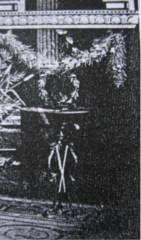
View of the atrium of the Pompeian style house of the Prince Napoléon
A picture of the Emperor’s study at Saint-Cloud Castle demonstrates that a gueridon of the same type took place in it ; it illustrates the success of this model in the imperial family.
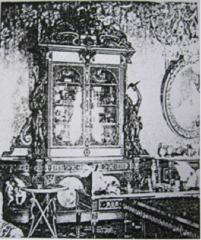
View of the cabinet de l’Empereur à Saint-Cloud (reproduced in Des Tuileries à Saint-Cloud, l’art décoratif du Second Empire)
Some years later the Gazette des Beaux-Arts published an engraving depicting a gueridon exhibited at the 1889 Universal Exhibition. The engraving shows a gilt bronze plate resting on a tripod having identical feet and it reveals the longevity of this model inside the Barbedienne Company production. The caption mentions “Bronze plate designed by Mr Levillain and made by Mr Barbedienne (1889 Universal Exhibition)”.

Guéridon, Exposition Universelle de 1889 (reproduced in Gazette des Beaux-Arts, p. 415)
The neo-Greek style
These gueridons illustrate the neo-Greek style developed in France in the 19th century. Inspired from the Greek Antiquity this style used Ancient features to create new artworks by re-interprating Ancient inspirations with modern taste.
To design these gueridons Louis-Constant Sévin probably drew his inspiration from the Ancient bronze tripods offered to the Greek athletes as a reward for their sport exploit. The Ancient tripod is used by the designer who distorted it from its original form and used it to create a fashionable furniture item.
Biography
Born in 1821 and dead in Paris in 1888, Louis-Constant Sévin was apprenticed to the parisian sculptor Marneuf. In 1839, he joined the sculptor-modelors Phénix and Joyau, as designer, and designed silver-smith’s objects for famous firms like Denière, Froment-Meurice, Morel and Duponchel. During the Revolution in 1848, C. Sévin joined Morel in London, as workshop manager and designed pieces that Morel exhibited in 1851. Back in France in 1851, C. Sévin went to Limoges and designed models for the porcelain factories of Jouhanneaud and Dubois of which many pieces were exhibited at the Universal Exhibition in 1855. From this date on, he worked for Ferdinand Barbedienne as sculptor-ornemanist until the end of his life. Sévin’s works are considerable, he designed furniture bronzes for the « hôtel de La Païva ». At the London Exhibition in 1862, he was awarded a medal « pour l’excellence artistique des meubles qu’il a dessinés et qui sont exposés par Barbedienne » : for the artistic excellence of the furniture he designed and which is exhibited by F. Barbedienne. He won a second class medal at the Union centrale des Arts décoratifs Exhibition in 1863 and was awarded a gold medal as « cooperator ». F. Barbedienne said that posterity would remember Sévin’s compositions. The most extraordinary object designed by C. Sévin for F. Barbedienne, was a Renaissance style gilded bronze monumental clock, four metres high, for which C. Sévin won a gold medal as well as was awarded the Légion of Honour at the Universal Exhibition in 1878. His triumph was still valid at the 1889 Universal Exhibition.
Born in 1810, Ferdinand Barbedienne started one of the most famous 19th century artistic bronze casting companies. He died in 1892. In addition to his personal production, he worked for famous artists such as Clésinger, Carrière-Belleuse and Guillemin. Barbedienne’s production was always highly esteemed and he was, himself admired by contemporary art critics who compared him during the 1878 Universal Exhibition to a « prince of industry and the king of bronze-casting ». He was there awarded the « Grand Prix » as well as 28 cooperator medals. His glory did not decline with the passage of the time for at the Universal Exhibition of 1889 the critics thanked Barbedienne for the example he set for other bronze-casters by the perfection of his bronzes.
Contact us
Tobogan Newsletter
If you want to be up-to-date with our new acquirings you can sign up to our newsletter.

